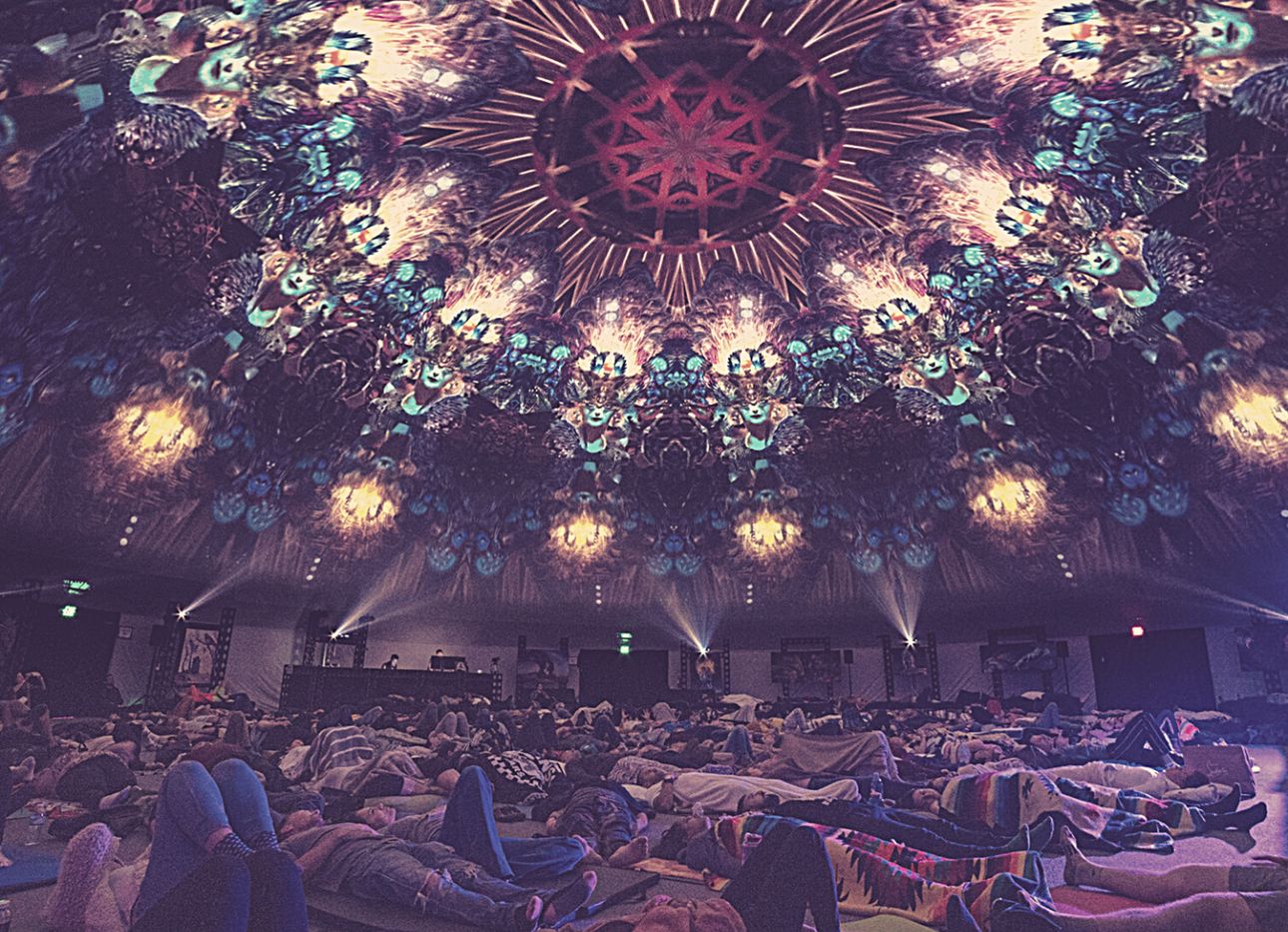
To Achieve a Mind-Expanding State Without Taking Psychedelics, Try Breathwork
In the late 1960s, Czech psychotherapist Stanislav Grof concluded, through his research on LSD at John Hopkins University, that psychedelic drugs could help treat emotional trauma—but without easy access to them, patients couldn’t take advantage of his findings. As an alternative, he and his late wife, the author and a psychotherapist Christina Grof, developed holotropic breathwork, a series of breathing techniques meant to induce “natural” psychedelic states through controlled hyperventilation that could be achieved without taking the illicit substance.
Their method, and ones comparable to it, are still used today in a variety of practices—including in yoga, mindfulness, and Western therapy—to reduce stress and anxiety, and to connect people with themselves, others, and the fabric of the universe. Vivian Rosenthal, co-founder and CEO of the three-year-old Manhattan breathwork studio Frequency Mind, teaches a two-part, connected circular breath that is similar to holotropic breathwork, and that can produce corresponding effects. She first encountered breathwork through Kundalini yoga, which she began studying to aid her physical and mental health. In doing so, Rosenthal says, she felt a profound sense of tranquility that she had never felt before, which prompted her to deepen her investigations of intentional, conscious breathing. She then discovered the work of breathwork pioneer David Elliott, and went to New Mexico to study the two-part breath with him. “I was honestly blown away by its potency,” Rosenthal says of the exercise, “and how closely it mimicked” her experiences of taking psychedelics. She decided to devote herself to teaching breathwork at Frequency Mind, where she could fuse intentional breathing, sound healing, and sacred geometry to offer moments of clarity and catharsis to others.
At the studio, Rosenthal leads students from within a singular setting that was designed using her experience in architecture, animation, and VR to heighten breathwork’s mind-expanding outcomes. Upon entering Frequency Mind, participants can expect a moment of shock when leaving the chaos of 27th Street, as I did when I recently showed up to take a class with about a dozen others. The entryway is lined with shag rugs and pillows, soft purple neon lights, and smoky incense; sounds of chimes and rhythmic chanting abound. An enormous dome fills the room. We entered it, after taking off our shoes, through an inviting door of ruffled mauve silk, only to find ourselves inside a space that felt even bigger on the inside. The blankets on the floor, and the projections of fluctuating geometries in bright waves of color along the convex ceiling, evoked the cozy, awed feeling of being a kid in a planetarium. “Through the visuals, we’re connecting back to nature,” Rosenthal says. “To patterns in nature, to sounds in nature, and to energy from nature.”
She began by explaining how to practice a “circular” breath: two inhales and one strong exhale. We repeated the trifecta of movements for thirty minutes, lowering the levels of CO2 in the body and alkalizing the blood. I felt a gentle tingling in my hands and feet, as well as cramping in my appendages. The latter, known as tetany, is a normal physiological response to the fluctuating oxygen and carbon dioxide levels. These sensations are an important factor in controlled breathing: While different versions of the exercise encourage different physical and emotional effects based on the particular flow of oxygen they generate, each approach seeks to disrupt our individual habits of breathing, taking us out of our ordinary physiological and neurological states, and facilitating new modes of being.
After the intense breathing, we lay flat on our backs, with our eyes closed, in a position similar to shavasana, and listened to soothing music and guided meditations through headphones. It’s not uncommon to uncontrollably laugh or to cry in this state, as some of my peers did. Rarely do we have an opportunity to be fully present in our bodies while our mind is slowed down, and when we do, the effects can be overwhelming.
Once the class was through, descriptions of the Frequency Mind experience from my fellow participants varied, including “collected,” “energized,” “buzzed,” “calm,” “forgiving,” and “loving”—in short, not dissimilar to the experience of taking psychedelic drugs. “This is deep, therapeutic medicine that’s essential in the world,” Rosenthal says. “That’s why we’re seeing so much sudden interest in breathwork. People are coming out of their homes and apartments, and really needing this kind of practice.”
While advances in psychotropic medicine continue, legal and financial barriers still make it out of reach for most at the moment. Breathwork, however, can be done by anyone, anywhere, at any time, and at no cost, and it combines seamlessly with most traditional and nontraditional therapies. Rosenthal thinks everyone can benefit from the practice. “Is it going to boost lung strength? Yes,” she says. “Is it also going to help mental health? Yes. Is it also going to help with digestion, or sleep, or lower blood pressure? Yes. Our whole country needs to be breathing.”